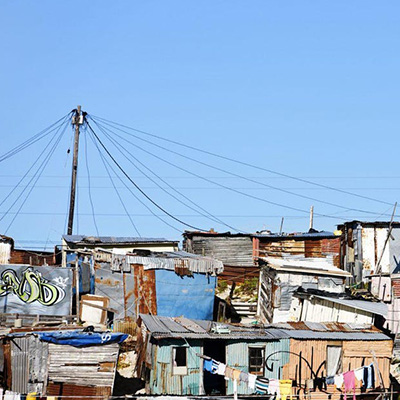Published On: Sep 18, 2015
A loss, in general, is to be avoided. Of all the various types of losses, economic loss is probably the most passively occurring of all.Essentially, economic loss isa loss wherein an organization or an individual loses money. It refers to financial loss and damage suffered that can usually be seen in a balance sheet or other financial statements rather than as physical injury or destruction.For a business entity, it is primarilymanifested as a revenue lossor cost overrun.Not surprisingly, the accumulated financial losses of Indian utilities are continuously soaring up and the industry cannot afford to wait longer for a turnaround. While existingutilities evaluate and measure parameters like AT&C loss, power reliability, effici¬ency and others; there is very limited or no evaluation of Power Quality (PQ) related parameters which are also contributed to economic losses.
Economic losses due to poor PQ area majorconcern for all stakeholders involvedincluding utilities, high-end industries and individual customers.Basic requirementssuch as computers, telecommunications equipment and other sensitive equipment, etc. havebecome advanced.We have become dependent on electronic or digital products which are sensitive and prone to high PQ incidents and related losses. One study undertaken by Wartsila India, in 2009, estimated that India suffers a staggering economic loss of INR 1000 Billion, because of power disturbances, primarily because of outages that is absence of supply in itself. Refer our previous blog for more details on Are Developing Economies at risk due to power quality issues and challenges?
This blog attempts to highlight the key economic loss incidentsthat occur due to poor PQ and the need to evaluate and mitigate them.
Some of the prominent incidentsresulting in economic loss due to poor PQ are,
- Production line interruption: that affects the overall productivity, causing loss to capital and goods
- Quality/Batch rejection: as the manufactured product becomes unsuitable for the market due to improper quality
- Reduced equipment life and failures: which increases the cost of maintenance for the machines or investments to replace them
- Harmonic issues: leading to the overheating of devices or equipment causing their capacity blockage or even failure/breakdown
- Increased equipment operating temperature: that adds up for the losses due to the heat and wearing of the devices making them unsuitable for use
- Potential risk of internal electrical fire: which may lead to safety and other environmental hazards including damage of machinery and money
The economicallosses that are observed more often are mainly due to the costs that are involved in the maintenance, setup or replacements of the devices which comes out as faulty or improper for use. Poor PQ, thus, is a big obstacle in achieving higher economy in terms of cost and services adding up to competitive pressures.The economic analysis of investments is one of the fundamental steps in any financial decision process. PQ mitigation investment options need to be evaluated in a systematic manner considering the financial impacts of PQ issues by all stakeholders involved and the costs associated with different alternatives to improve PQ performance. The selection of an optimum mitigation method is a big decision for utilities and high-end industrial customers. PQ mitigation investment should be considered as insurance coverage rather than only investment approach, as it prevents highly sensitive equipment from high losses in the long run.
THE NEED TO EVALUATE PQ INCIDENTS TO REDUCE ECONOMIC LOSS
The economic evaluation of PQ issues is one of the main problems the power system is facing.In a world, where every day more and more electronic devices are connected to the power grid a poor PQ has huge financial impact on industries.The factors responsible for this impact are most times unclear and very often difficult or costlyto monitor. Therefore, the economical evaluation of this impact is even more cumbersome.Evaluation also seeks for the determination of actual costs that are to be invested for lessening the other economical impacts. There is a need ofdefined strategies or action plans to avoidsuch losses which involves the following costs due to PQ disturbance:
- Direct Costs: includes the damage in the equipment, loss of production / raw material, non-productive period, high energy bills, restart costs, etc.
- Indirect Costs: are difficult to evaluate andan industry may not be able to accomplish the deadlines for some deliveries and loose future orders. Additional investments to prevent PQ issues may be considered as an indirect cost.
In efficient businesses, all issues need to be resolved and so should be the case with issues arising out of PQ. Following measures can be considered for bringing down the level of effect caused due to poor PQ are,
- Integrated design approach right at inception: can create a robust electricity distribution system and avoid future issues with system and its resilience to overcome poor PQ impact.
- Periodic troubleshooting: of the problems that arise in equipment to obviate them from major breakdowns or failures.
- Identification and regular measurement of PQ parameters: will reduce the risk of higher investment of device failures and other coststo considerable extent. Prior inspections can help analyze for any potentialissues and their immediate solutions to avoid any major effect on the equipment/production life cycle.
- An analytical approach: will help in understanding the patterns of PQ issues and possibly theireradication at maximum level. Analyzing plant data services can help accumulate and identify the root cause for developing effective PQ mitigation strategy.
- Regular maintenance: of the equipmentmakes them durable and reliable for a longer period of time with lesser cost.
- Timely Energy Auditing: such as monitoring the energy levels and reviewing the areas where the energy costs can be optimized will reduce the losses.
- Implementation of safety measures: to minimize any dangers or hazards due to the malfunctioning of the devices.
CASE STUDY ON ECONOMIC LOSS REDUCTION DUE TO POOR PQ IN FOOD AND BEVERAGE INDUSTRY
PROBLEM STATEMENT: Hindustan Coca Cola Beverages Pvt. Ltd. (HCCB) plant in Khurda Industrial Estate in one of the largest and key bottling facilities with 2400 bottles per minute capacityacross different service lines. For the last few years, Khurda Industrial estate has been experiencing poor quality of incoming power from Odisha State Electricity Board (OSEB) and all major industries (including HCCB) in this estate have been impacted badly due to this issue. The plant was facing problem of stoppage of production line thereby causing loss of productivity. The problems were mainly due to interruptions in power supply and under voltage events. After each power supply interruption, there was some time required to resume productivity.
|
Sr. No.
|
Line
|
Line running time after power resume (in mins)
|
Production Capacity per hour (No of cases per hour)
|
Load factor
|
Actual Cases Lost
|
Monetary Loss (in Rs per event)
|
|
1
|
Krones
|
15
|
1500
|
80%
|
300
|
3168
|
|
2
|
Maaza
|
12
|
1500
|
80%
|
240
|
2534
|
|
3
|
RGB
|
10
|
1500
|
80%
|
200
|
2112
|
|
4
|
Kinley
|
10
|
300
|
80%
|
40
|
422
|
|
5
|
PET- 140
|
15
|
933
|
80%
|
187
|
1970
|
|
Total Loss
|
10207
|
Table 1. Shows monetary loss plant was facing due to each event of supply interruption
|
Month
|
Unscheduled Power cut
|
Unbalanced Voltage
|
Total No. of Occurrences
|
|
No. of Occurrences
|
No. of Occurrences
|
|
January’14
|
10
|
9
|
19
|
|
February’14
|
17
|
8
|
25
|
|
March’14
|
45
|
42
|
87
|
|
April’14
|
68
|
51
|
119
|
Table 2. Power supply interruptions in each month
From above table it can be seen that from January to April 2014, number of under voltage and unscheduled power supply interruptions were 250. With cost of each event estimated to Rs. 10,207, the plant had a loss of about Rs. 25,51,750 during this period. Combining, PQ and other losses due to higher energy cost, loss in productivitythe plant had a economic loss of around Rs. 62 million per year.
SOLUTIONS ADOPTED: The plant took various measures like automatic switch over system for DG sets during power failure, forward and reverse synchronization system, and SCADA system. The SCADA system helped to monitor the voltage profile more closely and the team could identify cause of malfunctioning of various sensitive equipment. Further, in order to find more reliable solution during the un-scheduled power interruptions and voltage variations, the plant team carried out a detailed power quality audit to discover reasons of voltage variations. Measurements were carried out at all critical locations and logged for longer duration of time to record number of events and duration of each such event.In order to protect its failures and loss of productivity, based on the power quality study and its finding, the plant team decided to install two numbers of UPS each of 600 kVA at critical locations to avoid breakdown arising due to voltage variations and unscheduled power interruptions.
BENEFITS ACHIEVED: By implementing above solutions, the plant carried out regular measurement and analysis of voltage profile, current and total harmonic distortions and its deviations were brought down close to standard limit as per the standards. The plant ensures regular power quality monitoring and thereby avoids production and economic loss.
For detailed case study, refer link – Distribution Network Voltage related Power Quality issues in a food and beverage industry
CONCLUSION
It is clear that poor PQ causes techno-economic inconveniences to different stakeholders connected in thenetwork.The economic losses incurred by the end users due to poor PQ are substantial and with proper attention suitable measures can be mitigated. While accurate estimation of loss is impossible as the root-cause is often not identified correctly,however, to select an optimum PQ mitigation method in the network, a detailed cost-benefit analysis is to be carried out by the involved parties.Intelligent and efficient PQ monitoring will provide the utilities and end users information needed to validate compliance, improve system stability, and eliminate unplanned downtime thereby contributing to the overall turnaround of utilities and their services for end users.
REFERENCES
- Power Quality Issues and Need of Intelligent PQ Monitoring in the Smart Grid Environment.pdf – International Journal of Emerging Technology and Advanced Engineering
- Cost of Power Disturbances to Industrial and Digital Technology Companies.pdf– EPRI’s Consortium for Electric Infrastructure for a Digital Society
- 3. Impact of Unreliable Power on a Paper Mill: A Case Study of Paper Industry of Punjab, India
- Consequences of Poor Power Quality – An Overview – Sharmistha Bhattacharyya and SjefCobben Technical University of Eindhoven The Netherlands
- Analysis of Methodologies for the Economical Evaluation of Power Quality







